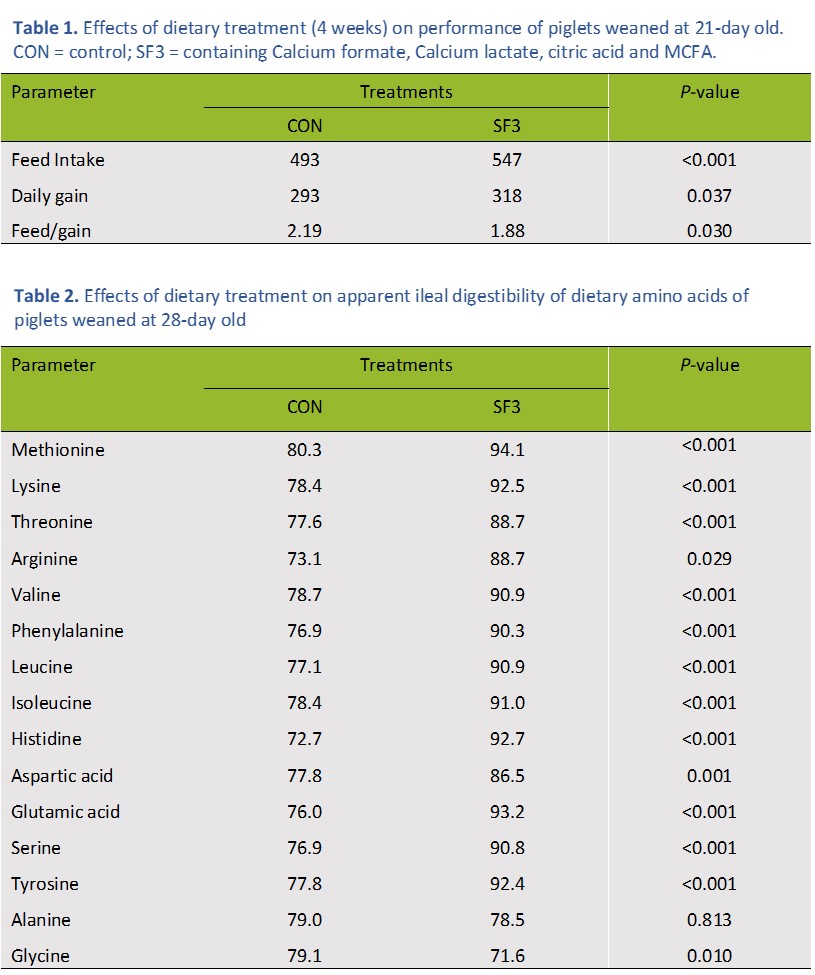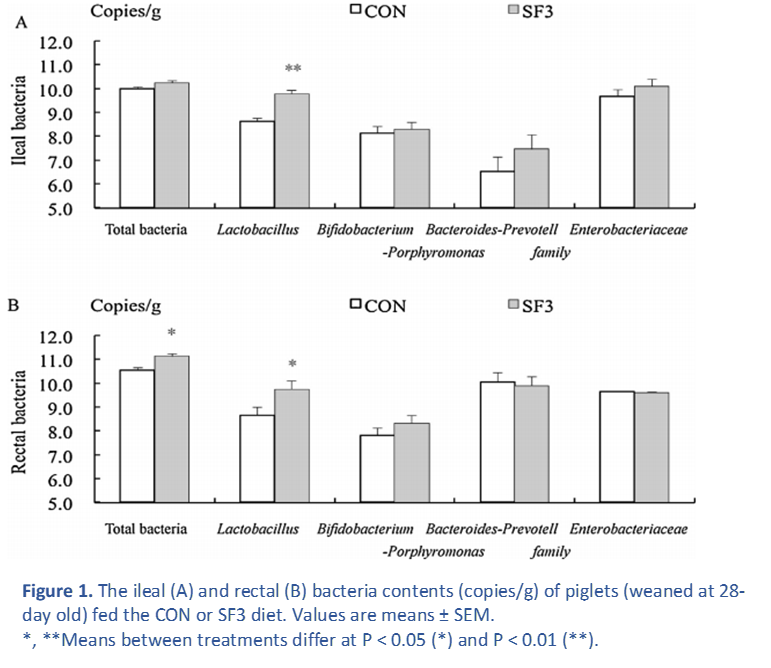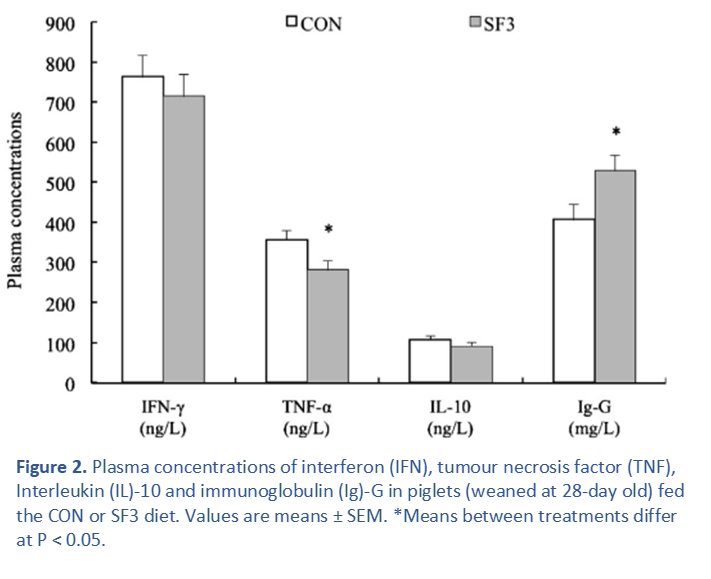



Zinc oxide alternatives for weaned pigs: organic acids and MCFAs
As concern for the use of Zinc oxide in pig feed grows, pig producers are looking for alternatives that can achieve similar results, writes Matthew Wedzerai, an experienced writer in the pig husbandry and animal feed industry.This concern follows the support of the European Commission in phasing out the usage of high-level Zinc oxide. Some European countries have already banned the therapeutic use of Zinc oxide in pig diets, whereas in others, its use is not prohibited. Could the use of effective alternatives be a solution to this debate? Interestingly, organic acids and medium chain fatty acids have been shown to have great potential in replacing the use of Zinc oxide on growth, nutrient digestibility, and immunity of weanling pigs.
Zinc oxide is normally used in a therapeutic dosage (2,500 ppm Zinc; 3,100 ppm Zinc oxide) for the prevention of post-weaning diarrhoea and occasionally oedema disease, both associated with E. coli infection in weaned piglets. Disease prevention is associated with improved growth and feed conversion efficiency, by preventing post-weaning diarrhoea and even mortality.
Effects of Zinc oxide
Benefits in piglet diets
• One study showed that Zinc oxide regulates secretion of brain-gut peptides that stimulate feed intake (Li et al., 2010) - this is associated with improved growth.
• It prevents diarrhoea and disease – high doses of Zinc oxide in piglet weaning diets stabilises intestinal microbiota and prevents attachment of pathogenic bacteria to the intestinal villi, which may prevent many problems associated with weaning diarrhoea. Zinc oxide also reduces secretion of ions to the intestinal lumen, thereby enhancing water resorption and preventing diarrhoea.
• It is involved in immuno-modulatory activities – high levels of Zinc enhance stability and diversity of the microbiota after the change of diet in weaned piglets (Starke et al., 2012); it also reduces the release of pro-inflammatory histamine, by inhibiting proliferation and activation of intestinal mast cells (Kim et al., 2012).
Environmental effects of Zinc oxide
Following Zinc-rich piggery manure application in the fields, Zinc tends to accumulate in soil. High levels of Zinc (heavy metal– relatively insoluble) in soil, and in water reservoirs due to run-off, are considered to be an environmental pollutant and health hazard.
Benefit-risk analysis
The overall benefit-risk balance for the use of Zinc oxide is negative, “as the benefits of Zinc oxide for the prevention of diarrhoea in pigs do not outweigh the risks for the environment,” said the European Medicines Agency (EMA) Committee for Medicinal Products for Veterinary Use (CVMP), 2016).
Replacement of Zinc oxide
Organic acids and medium chain fatty acids (MCFA)
Mode of action
• Supplementation of diets with organic acids reduces pH and the feed's buffering capacity. Their antimicrobial properties help to prevent the growth of bacteria (such as Salmonella and E. coli), yeasts and moulds. The study of Harada et al. (1986) demonstrated that the supplementation of organic acids in piglet diets also results in increased secretion of the pancreatic enzyme.
• Medium chain fatty acids are triglycerides whose fatty acids have an aliphatic end of 6–12 carbon atoms. They have proven strong antimicrobial properties (Decuypere and Dierick, 2003), and have a similar mode of action to organic acids.
Field trials with organic acids and medium chain fatty acids
Two experiments were conducted to evaluate effects of dietary solid mixture of organic acids and medium chain fatty acids as a replacement of Zinc oxide on growth, digestibility and immunity of weanling pigs (Kuang et al., 2015).
A diet with supplemental antibiotics (containing pure Colistin sulfate and Enramycin, respectively, at 0.02 g/kg diet) and Zinc oxide (2.5 g/kg diet) was used as the control (CON) group, and another diet without supplemental Zinc oxide (ZnO) was prepared by inclusion of the SF3 (containing Calcium formate, Calcium lactate, citric acid and MCFA at 340, 160, 70 and 130 g/kg, respectively) at 3 g/kg diet.
Results of the trial
The trial showed that the combination of organic acids and MCFA significantly improved feed intake, growth rate and feed/gain ratio (Table 1), and better amino acid digestibility (Table 2), compared to the combination of Zinc oxide and antibiotics.

The (organic acid + MCFA) diet resulted in better diversity of the microbiota, promoting a healthy gut and possibly improving feed utilisation (Figure 1 below).

The (organic acid + MCFA) diet stimulated regulatory cytokine expression and down-regulated pro-inflammatory cytokine expression (associated with increased proliferation of Lactobacillus following organic acids consumption) compared to the control diet (Figure 2). This shows clearly that the organic acid + MCFA are better in improvi ng the immunity of the piglets.
ng the immunity of the piglets.
Summary
• Dietary supplementation with a combination of organic acids and medium-chain fatty acids results in better growth rate, feed intake, and feed/gain ratio of weaned pigs compared to the diet comprising a combination of Zinc oxide and antibiotics, under commercial conditions.
• The improved growth of pigs was associated with increased amino acid digestibility and immunity.
• The stimulated regulatory cytokine expression and down regulated pro-inflammatory cytokine expression might be associated with increased proliferation of Lactobacillus following organic acids consumption; improving the immunity of the piglets.
• It can be concluded that organic acids combined with MCFA can effectively replace the use of Zinc oxide.
References
Decuypere, J. A. and N. A. Dierick. 2003. The combined use of triacylglycerols containing medium-chain fatty acids and exogenous lipolytic enzymes as an alternative to in-feed antibiotics in piglets: concept, possibilities and limitations. An overview. Nutrition Research Reviews 16: 193–209.
European Medicines Agency (EMA)
http://www.ema.europa.eu/ema/index.jsp?curl=pages/medicines/veterinary/referrals/Zinc_oxide/vet_referral_000122.
jsp&mid=WC0b01ac05805c5170
Harada E, Niiyama M. and B. Syuto. 1986. Comparison of pancreatic exocrine secretion via endogenous secretin by intestinal infusion of hydrochloric acid and monocarboxylic acid in anesthetized piglets. Jpn. J. Physiol., 36(5): 843- 856.
Kuang, Y., Y. Wang, Y. Zhang, Y. Song, X. Zhang, Y. Lin, L. Che, S. Xu, D. Wu, B. And Z. Xue. 2015. Fang Effects of dietary combinations of organic acids and medium chain fatty acids as replacement of zinc oxide on growth, digestibility and immunity of weaned pigs.
Li, X.L., Dong, B., Li, D.F. and J. D. Yin. 2010. Mechanisms involved in the growth promotion of weaned piglets by high-level zinc oxide. Journal of Animal Science and Biotechnology, 1:59-67.
Starke, I., Vahjen, W. And J. Zentek. 2012. Dietary zinc oxide leads to short and long term modification in the intestinal microbiota of piglets. XII International symposium on digestive physiology in pigs. May-June 2012, USA.
About the author
Matthew Wedzerai holds an MSc in Animal Science (Animal nutrition) from Wageningen
University, The Netherlands. He also holds a Diploma in Pig husbandry & Animal Feed,
PTC+ College, The Netherlands.
He has 7 years’ experience in the pig husbandry and animal feed industry. Since 2014 he
has been contributing to the pig and feed industry through his articles based on scientific research.
He is also a Copywriter and Editor of the editing company, Spotless Copy, a firm that
provides professional copywriting and editing services.









